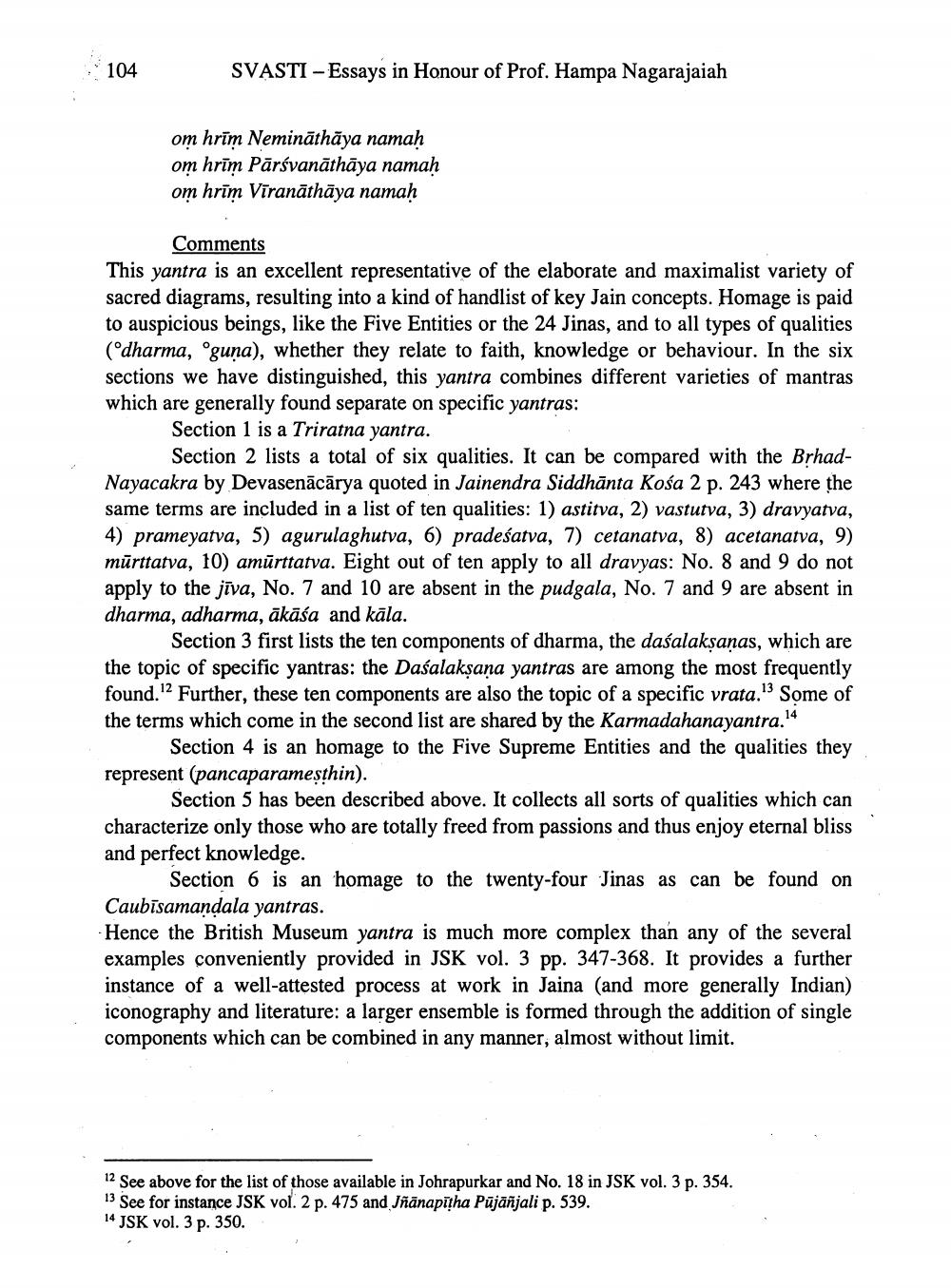________________
104
SVASTI -Essays in Honour of Prof. Hampa Nagarajaiah
om hrim Neminathāya namaḥ
om hrim Pārsvanāthāya namah om hrim Viranāthāya namah
Comments
This yantra is an excellent representative of the elaborate and maximalist variety of sacred diagrams, resulting into a kind of handlist of key Jain concepts. Homage is paid to auspicious beings, like the Five Entities or the 24 Jinas, and to all types of qualities (dharma, guna), whether they relate to faith, knowledge or behaviour. In the six sections we have distinguished, this yantra combines different varieties of mantras which are generally found separate on specific yantras:
Section 1 is a Triratna yantra.
Section 2 lists a total of six qualities. It can be compared with the BṛhadNayacakra by Devasenācārya quoted in Jainendra Siddhänta Kosa 2 p. 243 where the same terms are included in a list of ten qualities: 1) astitva, 2) vastutva, 3) dravyatva, 4) prameyatva, 5) agurulaghutva, 6) pradeśatva, 7) cetanatva, 8) acetanatva, 9) mūrttatva, 10) amūrttatva. Eight out of ten apply to all dravyas: No. 8 and 9 do not apply to the jiva, No. 7 and 10 are absent in the pudgala, No. 7 and 9 are absent in dharma, adharma, ākāśa and kāla.
Section 3 first lists the ten components of dharma, the daśalakṣaṇas, which are the topic of specific yantras: the Daśalakṣaṇa yantras are among the most frequently found."2 Further, these ten components are also the topic of a specific vrata." Some of the terms which come in the second list are shared by the Karmadahanayantra.14
Section 4 is an homage to the Five Supreme Entities and the qualities they represent (pancaparamesthin).
Section 5 has been described above. It collects all sorts of qualities which can characterize only those who are totally freed from passions and thus enjoy eternal bliss and perfect knowledge.
Section 6 is an homage to the twenty-four Jinas as can be found on Caubisamandala yantras.
Hence the British Museum yantra is much more complex than any of the several examples conveniently provided in JSK vol. 3 pp. 347-368. It provides a further instance of a well-attested process at work in Jaina (and more generally Indian) iconography and literature: a larger ensemble is formed through the addition of single components which can be combined in any manner, almost without limit.
12 See above for the list of those available in Johrapurkar and No. 18 in JSK vol. 3 p. 354. 13 See for instance JSK vol. 2 p. 475 and Jñānapīṭha Pūjāñjali p. 539.
14 JSK vol. 3 p. 350.




